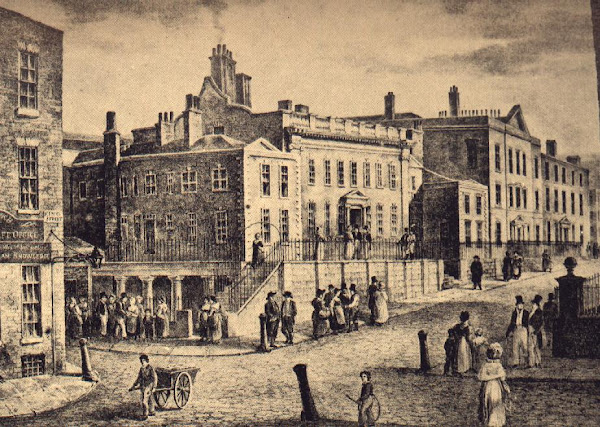
The novels of William Harrison Ainsworth are unfamiliar to the majority of readers who enjoy nineteenth century literature today. Yet Ainsworth enjoyed a spectacular success in his own time. The son of a Manchester solicitor, he found the glittering prizes of fame and fortune in the Capital at the age of only thirty. But when fashionable London’s ardour cooled, it was his native city that provided him with the ultimate honour and recognition. But, in the course of the 122 years since his death, his works have fallen almost completely from the favour of the reading public. Up until the 1940s and 50s the better known titles were available in pocket editions, published by Everyman and similar presses, but nowadays, Ainsworth’s novels are difficult to find. A few are printed in limited quantities by local publishers, and others are available as special ‘print on demand’ items obtainable through the Internet, but the majority of the forty titles in the Ainsworth canon are only to be found in remote corners of second hand bookshops. This situation requires some explanation; so, let us take a closer look at the remarkable story of Ainsworth’s life and work, beginning with his family background in the latter part of the eighteenth century.
William’s father, Thomas Ainsworth, was a descendant of the Ainsworths of Tottington, near Bury, about 2 miles from the village of Ainsworth (the original Ainsworths of Ainsworth had died out shortly after the Civil War). He was born in Rostherne, Cheshire, in 1778, but spent his adult life in Manchester, where he was a partner in the successful legal practice of Halstead and Ainsworth in Essex Street. In the course of his professional life, he was involved with many of the public improvements in the city most notably the radical remodelling of the Market Street area. The author’s middle name was provided by Ann Harrison, who was born in Kirkham in the same year as Thomas Ainsworth. Ann was the daughter of the Rev. Ralph Harrison (1748-1810), who had been minister of the Cross Street Chapel since 1771 and became professor of Greek, Latin and ‘polite literature’ at the newly established Manchester Academy in 1786. The academy moved to Oxford in 1889, and was henceforth known as Manchester College, where there is a memorial window by Burne-Jones in memory of the Rev. Harrison. He also found time to take an interest in business matters, particularly concerning the growth of Manchester, and made a small fortune through property speculation. In this he may well have come into contact with Thomas Ainsworth, and it is quite possible that Thomas might have met Harrison’s daughter through this business relationship.
Thomas Ainsworth married Ann Harrison in 1802, and the couple established their home in King Street, at that time a prestigious residential address, in central Manchester(see illustration below). They had two sons: William Harrison Ainsworth (b.1805), and Thomas Gilbert Ainsworth (b.1806), who won a scholarship to Cambridge, but there suffered what was described as ‘brain fever,’ which left him mentally impaired until his death at the age of 70. The Ainsworths also owned a country residence, named Beech Hill, in Smedley Lane, Cheetham Hill (see illustration above), which Thomas purchased in 1811. This location was described as: ‘charmingly situated on high ground, and only a distant glimpse of Manchester was presented across the intervening gardens and fields. From the back of the house a really beautiful view extended over Crumpsall and Heaton Park – a rich well-wooded country of undulating hills.’ Here it was that the family spent many of their summer months when the boys were young. A subsequent occupant was John Edward Taylor, the founder of the Manchester Guardian, who died there in 1844. During the twentieth century, the house became a Church Army Labour Home, and was eventually demolished. There now stands a modern building; a nursing home, which retains the name of Beech Hill, but sadly without the rural aspect.
More to follow soon ...

